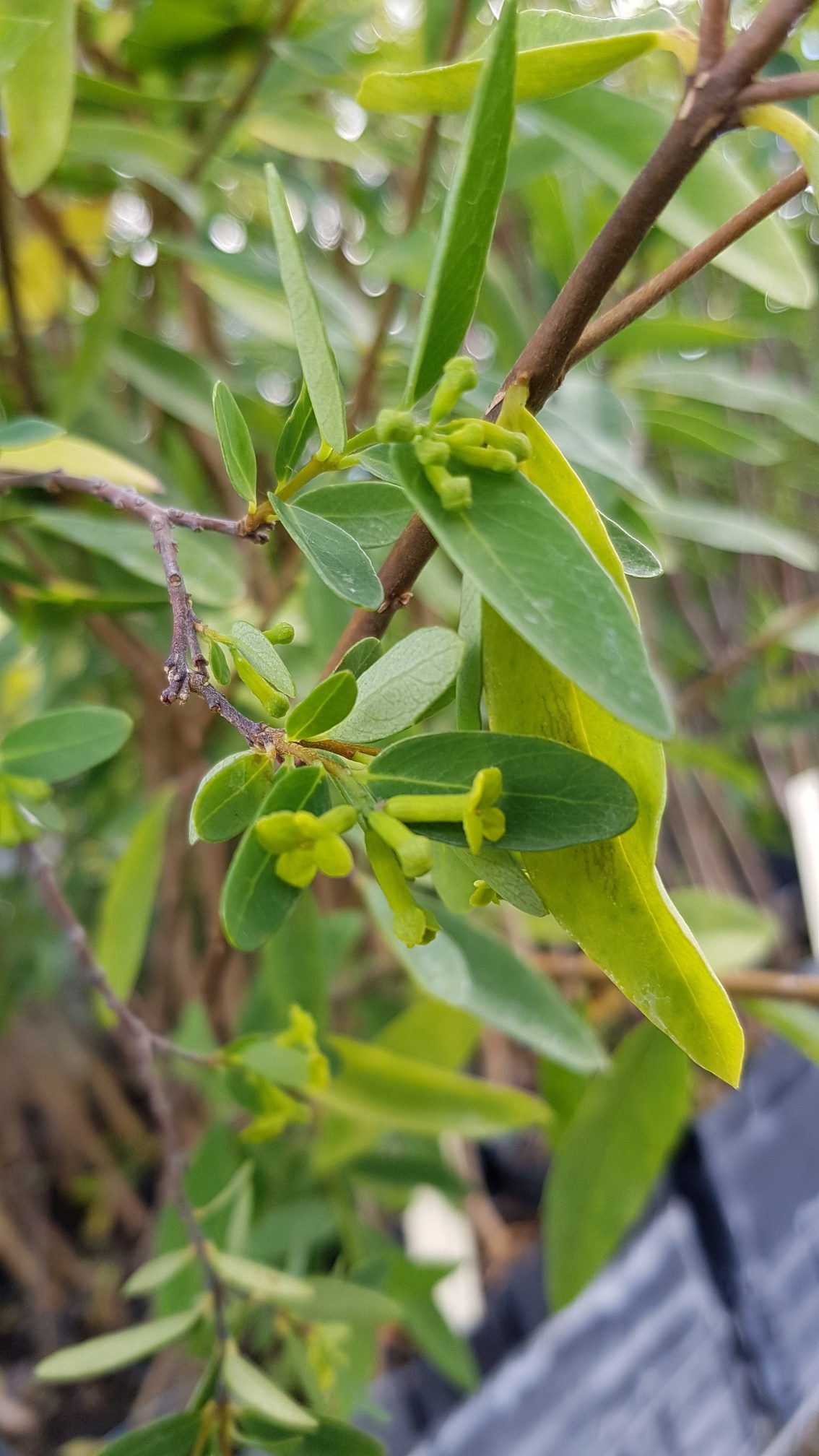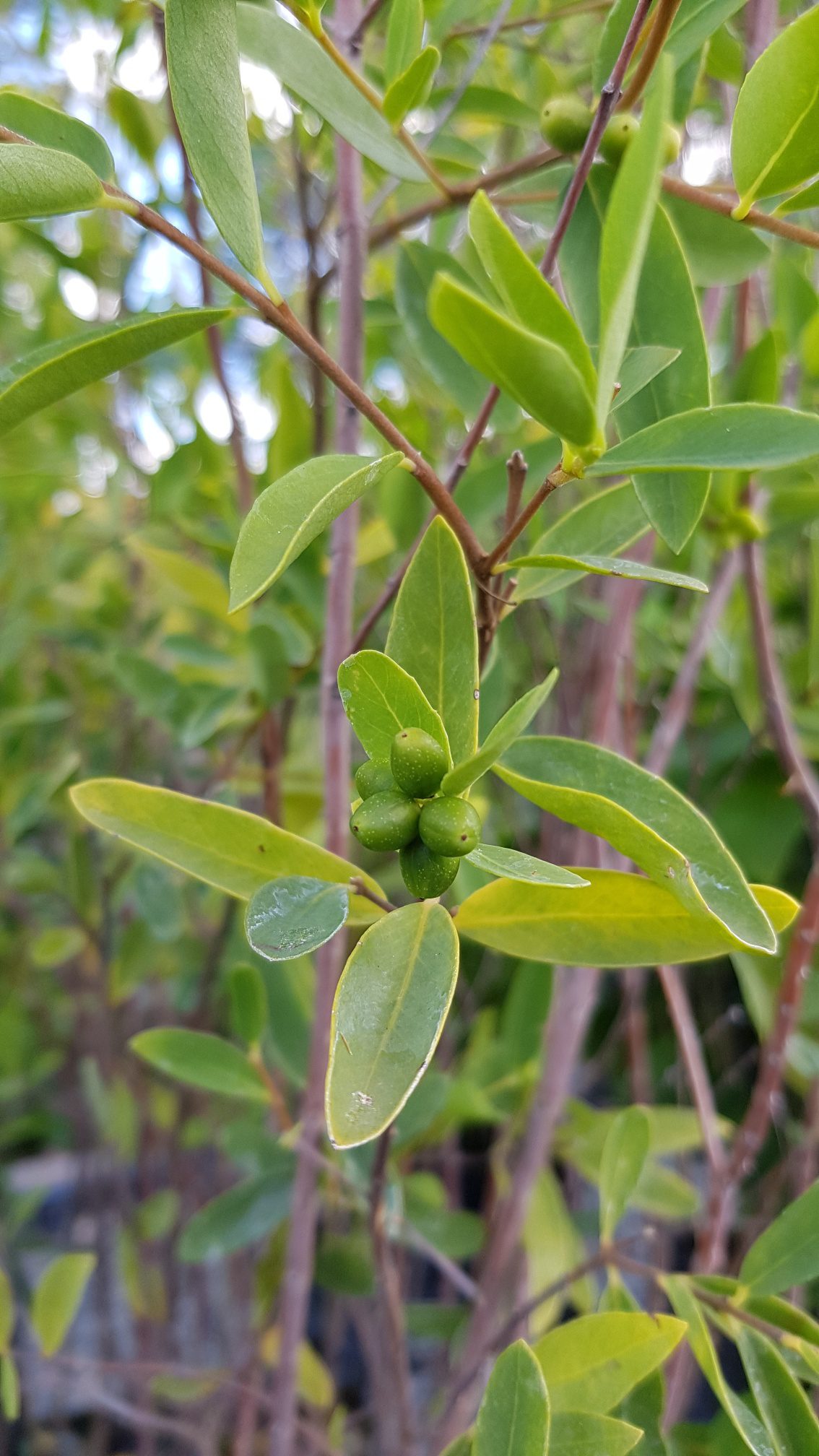Tiebush
Wikstroemia indica, Fam. Thymelaceaeae


Shrub to about 1.5m with very fibrous stems. The fibres make it almost impossible to break off a branchlet cleanly. Instead it tears off with a long string of fibrous bark attached, leaving behind a bare strip on the stem.
| Weed Category: | |
| Weed: | No |
| Form or habit: | Shrub |
| Family: | Thymelaceaeae |
| Leaf: | Simple, opposite, entire, ovate to elliptic, 1.5-6.5 x 0.5-2.5cm, glabrous. Dark green above, paler below, venation visible on both surfaces. |
| Flower conspicuous: | Conspicuous |
| Flower colour: |
Yellow, Green |
| Flower description: | Up to 2.5cm long, of a few pale to green yellow, tubular flowers. Mainly spring to summer. |
| Fruit conspicuous: | Conspicuous |
| Fruit colour: |
Red |
| Fruit: | |
| Fruit description: | Succulent, bright red, ovoid or ellipsoid drupes, 6-8mm long. Summer to winter. |
| Habitat: | Rainforest, woodland. |
| Distribution | Queensland, New South Wales, Northern Territory, New Guinea, Melanesia, Malesia, Asia, Pacific Islands. |
| Food source for: | Fruit eaten by the mistletoe bird, brown cuckoo dove and regent bowerbird. |
| Toxicity: | Fruit and leaves toxic to stock. Apparently used as a fish poison. |
| Origin: | Australia, New Guinea, Melanesia, Malesia, Asia, Pacific Islands. |
| Notes: | The bark, pulled off in long strips, has been used, in India, to make rope. It was once an export from the Philippines to Japan, were it was used for making paper strong enough to be used as bank notes. In Fiji, bark from the roots was applied to sores, while leaves and bark from the stems was used to treat coughs. |
| Information sources: | Melzer R. & Plumb J. (2007) Plants of Capricornia. |



